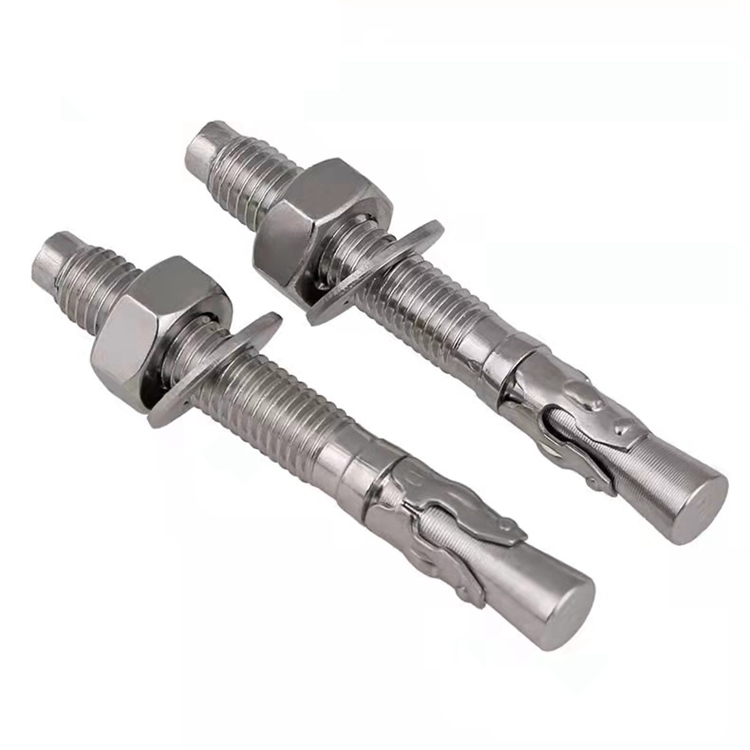Understanding F1554 Anchor Bolts for Structural Applications and Their Specifications
Nov . 24, 2024 16:16 Back to list
Understanding F1554 Anchor Bolts for Structural Applications and Their Specifications
Understanding F1554 Anchor Bolts Specifications and Applications
Anchor bolts are critical components in various construction and engineering projects, anchoring structures to concrete foundations and ensuring stability and durability. Among the different types of anchor bolts, F1554 anchor bolts are particularly significant due to their adherence to specific standards established by the ASTM (American Society for Testing and Materials). This article delves into the specifications, types, and applications of F1554 anchor bolts, highlighting their importance in modern construction practices.
What is F1554?
The F1554 specification governs the manufacturing and performance of anchor bolts used to connect structural elements to concrete foundations. These bolts are essential in providing necessary support for various structures, including buildings, bridges, and industrial facilities. The F1554 standard outlines different grades of anchor bolts, namely Grades 36, 55, and 105, which correspond to the minimum yield strength of the bolt material measured in ksi (kilopounds per square inch).
- Grade 36 This grade has a minimum yield strength of 36 ksi and is often used for less demanding applications, where high resistance to tensile and shear forces is not a primary concern.
- Grade 55 A mid-range option, Grade 55 anchor bolts have a minimum yield strength of 55 ksi. They are suitable for standard construction applications that demand a reliable level of strength and durability.
- Grade 105 The highest strength category, Grade 105 anchor bolts, boast a minimum yield strength of 105 ksi. They are designed for use in heavy-duty applications, where extreme loads and harsh environmental conditions are present.
Types of F1554 Anchor Bolts
F1554 anchor bolts come in various forms to suit different installation needs and structural requirements
. The most common types include1. Straight Anchor Bolts These are simple bolts with a uniform diameter along their length, often used in situations where the bolt can be fully embedded in concrete.
f1554 anchor bolts

2. L- and J-Bolts These bolts feature a bend at one end, which anchors them securely in concrete. Their unique shape provides added resistance to pullout forces.
3. Headed Anchor Bolts These bolts have a head at one end, providing a larger surface area for load distribution. They are particularly useful in applications requiring high tensile strength.
Applications of F1554 Anchor Bolts
F1554 anchor bolts are versatile and can be employed in various construction scenarios. Common applications include
- Steel Frame Construction F1554 bolts are instrumental in securing steel columns and beams to concrete foundations, providing lateral stability against wind and seismic forces.
- Industrial Equipment Mounting Machinery and heavy equipment often require robust anchoring solutions to withstand vibrations and operational stresses. F1554 anchor bolts are ideal for these applications due to their high strength and reliability.
- Bridge Construction In the construction of bridges, these bolts are utilized to anchor critical structural elements, ensuring the integrity and longevity of the infrastructure.
- Power Generation Facilities F1554 anchor bolts are crucial in securing components within power plants, including wind turbines, where they face dynamic loading conditions.
Conclusion
F1554 anchor bolts are indispensable in contemporary construction and engineering. Their adherence to specific standards ensures quality and performance, making them suitable for a wide range of structural applications. By understanding the different grades, types, and applications of F1554 anchor bolts, engineers and builders can make informed decisions, ensuring the safety and stability of their projects. As construction techniques continue to evolve, the importance of robust anchoring solutions like F1554 will remain paramount, contributing to the resilience of our built environment.
Latest news
-
High-Quality Panel Stud Bolt Reliable Panel Stud Bolt Factory & Suppliers
NewsJul.08,2025
-
High-Precision Fine Thread Locknuts Manufacturer & Supplier Custom Solutions
NewsJul.08,2025
-
PH Imperial Stud Bolt – High Strength Fasteners from Leading Supplier & Factory
NewsJul.07,2025
-
High-Quality Allen Wrench Bolts Leading Factory, Company & Suppliers
NewsJul.07,2025
-
Wholesale Ball Stud Bolt - High Quality Supplier & Factory Price Reliable Wholesale Ball Stud Bolt Company
NewsJul.06,2025
-
High-Strength Alloy Bolts Manufacturer & Supplier Quality Alloy Fasteners Factory
NewsJul.06,2025
